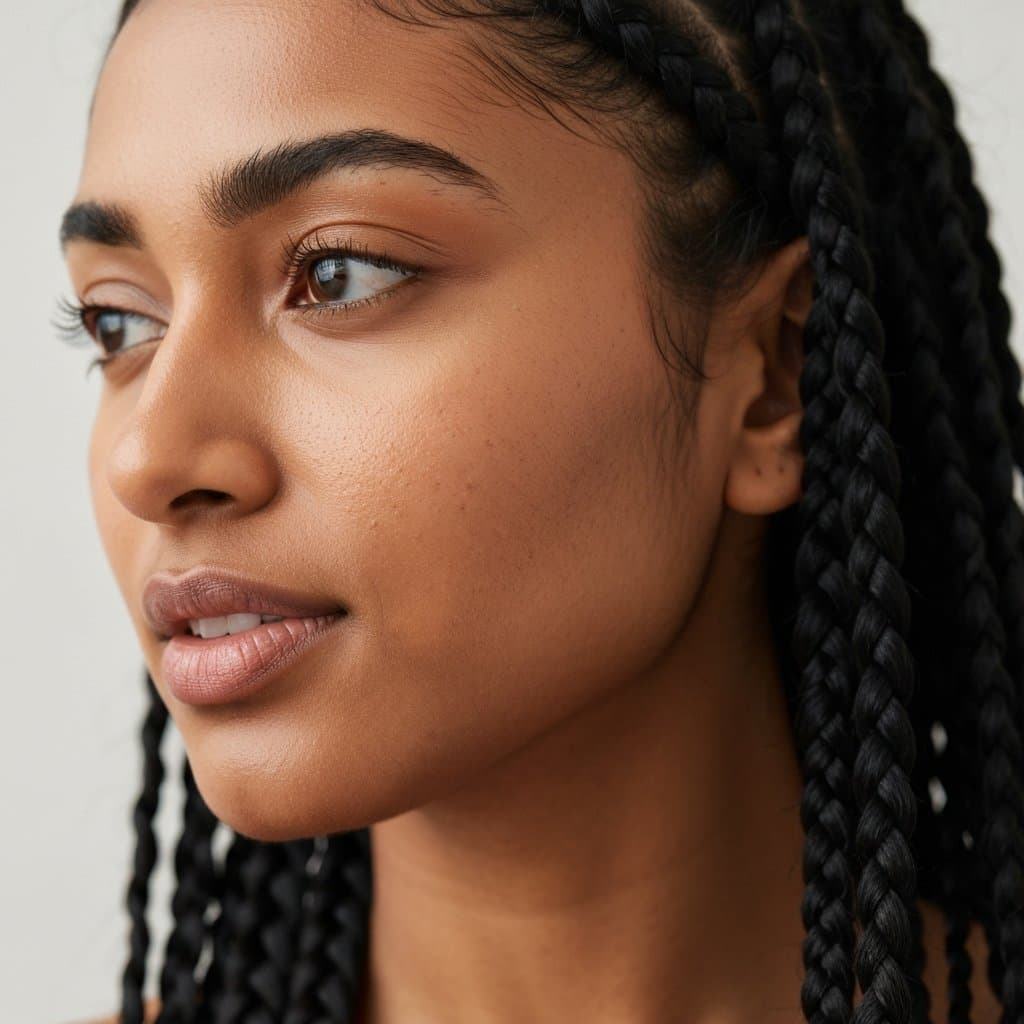Knotless Braids vs. Box Braids: The Ultimate Guide to Choosing Your Next Protective Style
Knotless Braids vs. Box Braids: Navigating the World of Protective Styles
Protective styles are a cornerstone of healthy hair care, offering a much-needed break from daily manipulation while promoting length retention and showcasing incredible artistry. Among the most popular choices are two reigning champions: traditional box braids and their modern counterpart, knotless braids. The debate of Knotless Braids vs. Box Braids is a common one in salons and hair forums, and for good reason. While they may look similar from a distance, their installation techniques, impact on scalp health, and overall feel are vastly different. Choosing the right one isn't just about aesthetics; it's about aligning with your hair's needs, your lifestyle, and your comfort level.
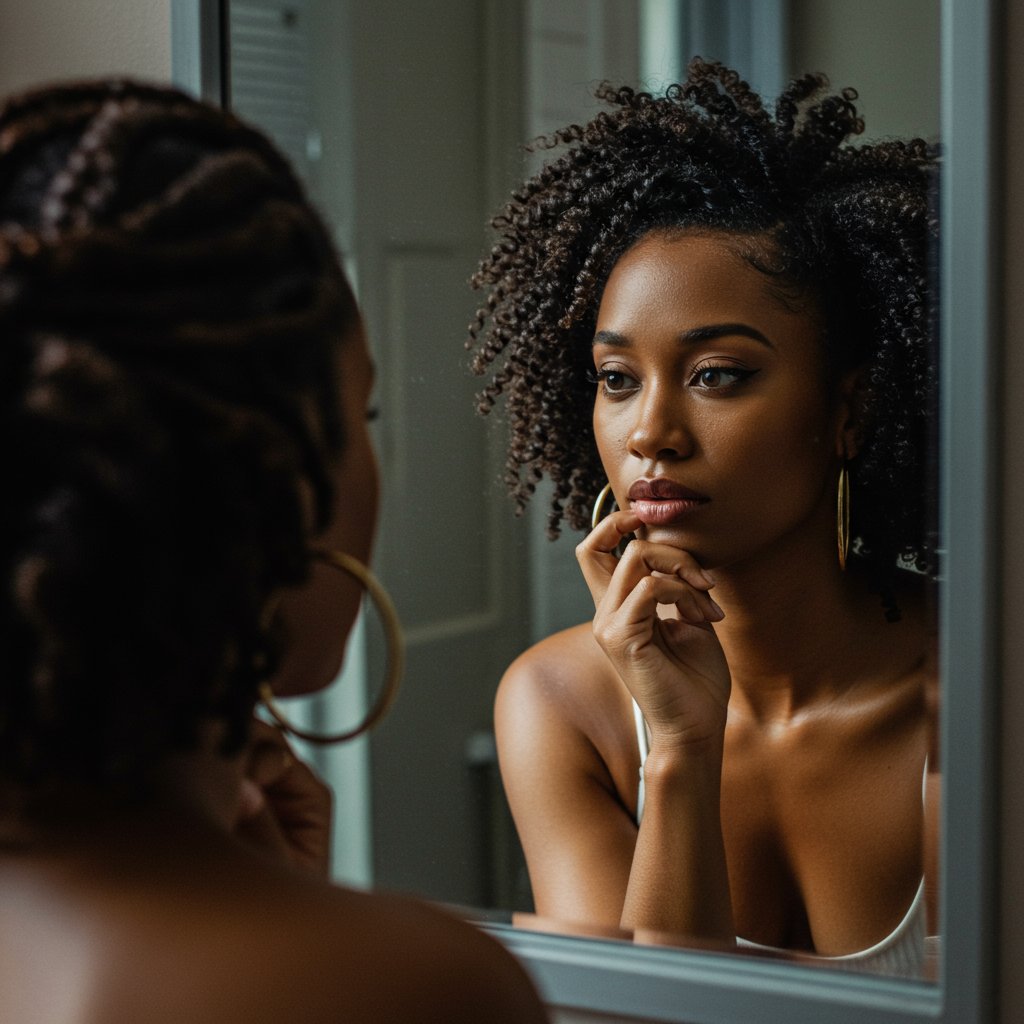
This comprehensive guide will delve deep into the nuances of each style. We will explore everything from the installation process and time commitment to the critical factors of scalp tension and hair health. We'll also compare their versatility, longevity, and the financial investment required. By the end, you'll have all the information you need to confidently decide whether the timeless appeal of box braids or the tension-free comfort of knotless braids is the perfect match for you and your beautiful hair.
What Are Traditional Box Braids? A Timeless Classic
Traditional box braids are an iconic protective style with a rich cultural history, celebrated for their sharp, defined parts and uniform appearance. The name "box braids" comes from the characteristic square or "boxy" partings made on the scalp. The defining technical element of this style is the small knot created at the base of each braid. To start a braid, the stylist wraps the extension hair around the base of the natural hair section, forming a secure anchor knot right at the scalp. This knot is what gives box braids their renowned durability and distinct look.
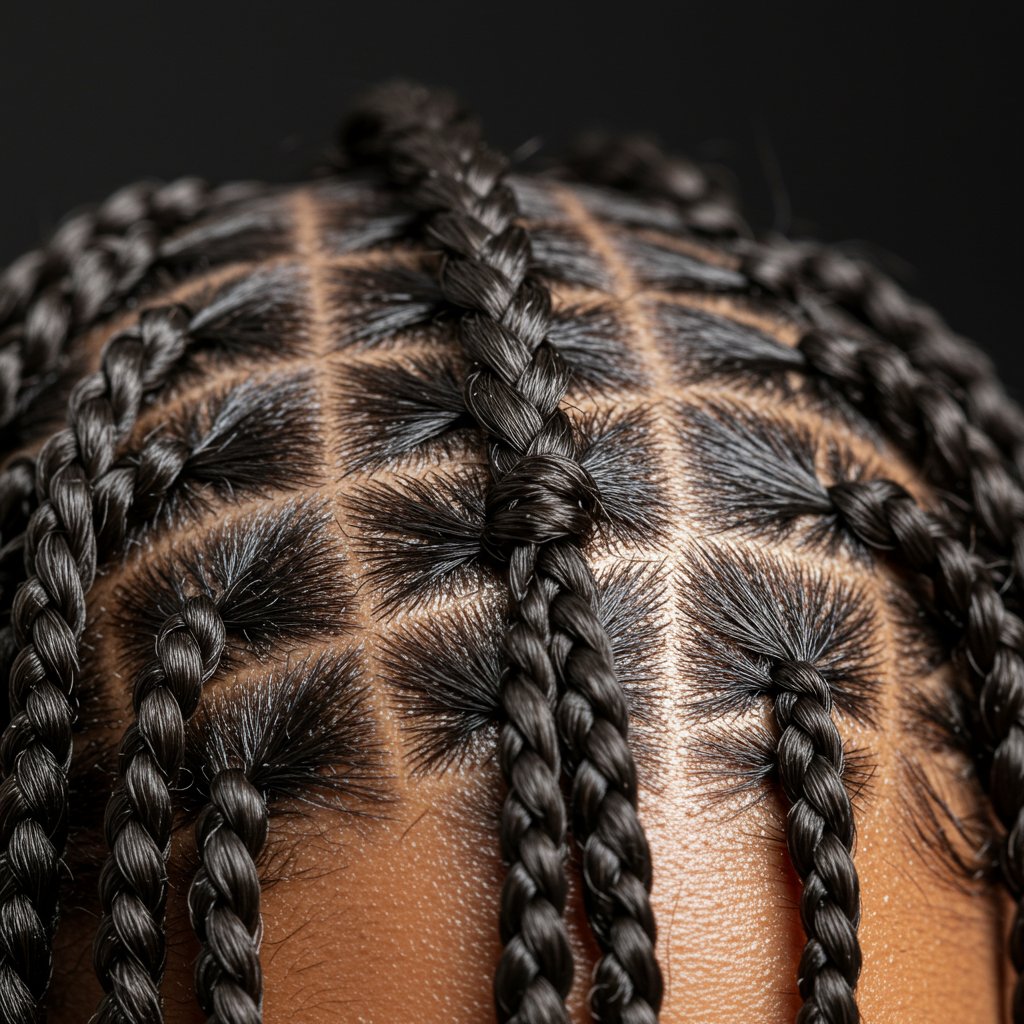
This installation method creates a very secure and sturdy foundation, which is a primary reason for their long-lasting nature. The knot firmly holds the extension hair in place, minimizing slippage and allowing the style to look neat for weeks. The result is a bold, beautiful, and highly structured look that has been a staple in Black hair culture for generations. From intricate, beaded styles to simple, waist-length plaits, box braids offer a canvas for endless creativity and self-expression. However, the anchor knot can also be a source of significant tension, especially if installed too tightly, which is a key point of consideration when weighing them against knotless alternatives.
What Are Knotless Braids? The Modern, Tension-Free Alternative
Knotless braids have surged in popularity over the last several years, hailed as a revolutionary evolution in braiding. The primary difference lies in the installation technique. Unlike box braids, knotless braids begin with your natural hair, and the extension hair is gradually fed into the plait as the stylist braids downwards. This is often called the "feed-in" method. By eliminating the initial anchor knot at the scalp, this technique creates a braid that lies flat and moves more freely from day one.
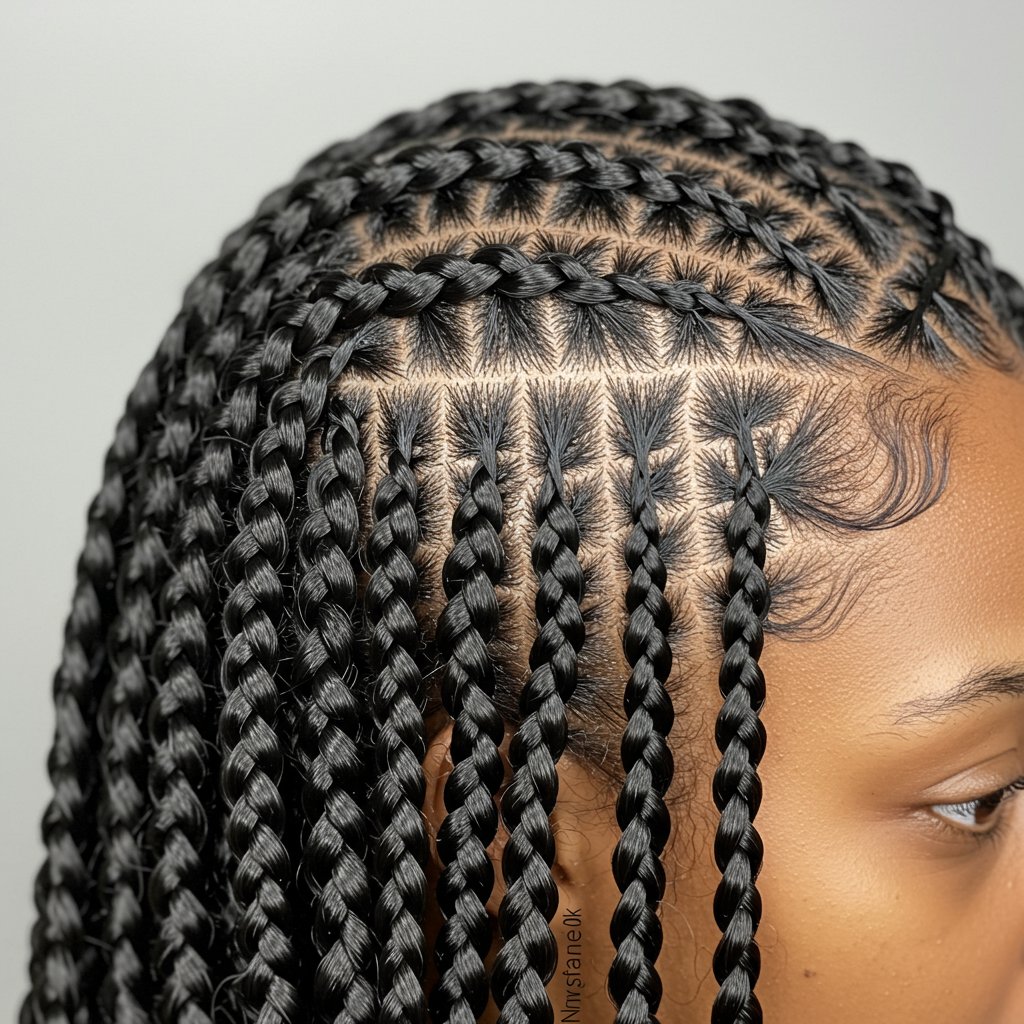
The aesthetic result is a more seamless, natural appearance, giving the illusion that the braids are growing directly from the scalp. But the most celebrated benefit of knotless braids is the dramatic reduction in scalp tension. Without the tight knot pulling at the root, the risk of traction alopecia (hair loss caused by sustained tension) is significantly lower. This makes them an excellent choice for individuals with sensitive scalps, fine hair, or those who have experienced discomfort from traditional braiding methods. This focus on hair and scalp health is the driving force behind the knotless braids movement and a major factor in the Knotless Braids vs. Box Braids discussion.
Installation Process and Time: A Side-by-Side Comparison
Understanding the installation process for both styles is crucial, as it directly impacts the time spent in the salon chair and the initial feel of the braids. While both require skill and precision, the techniques are fundamentally different.
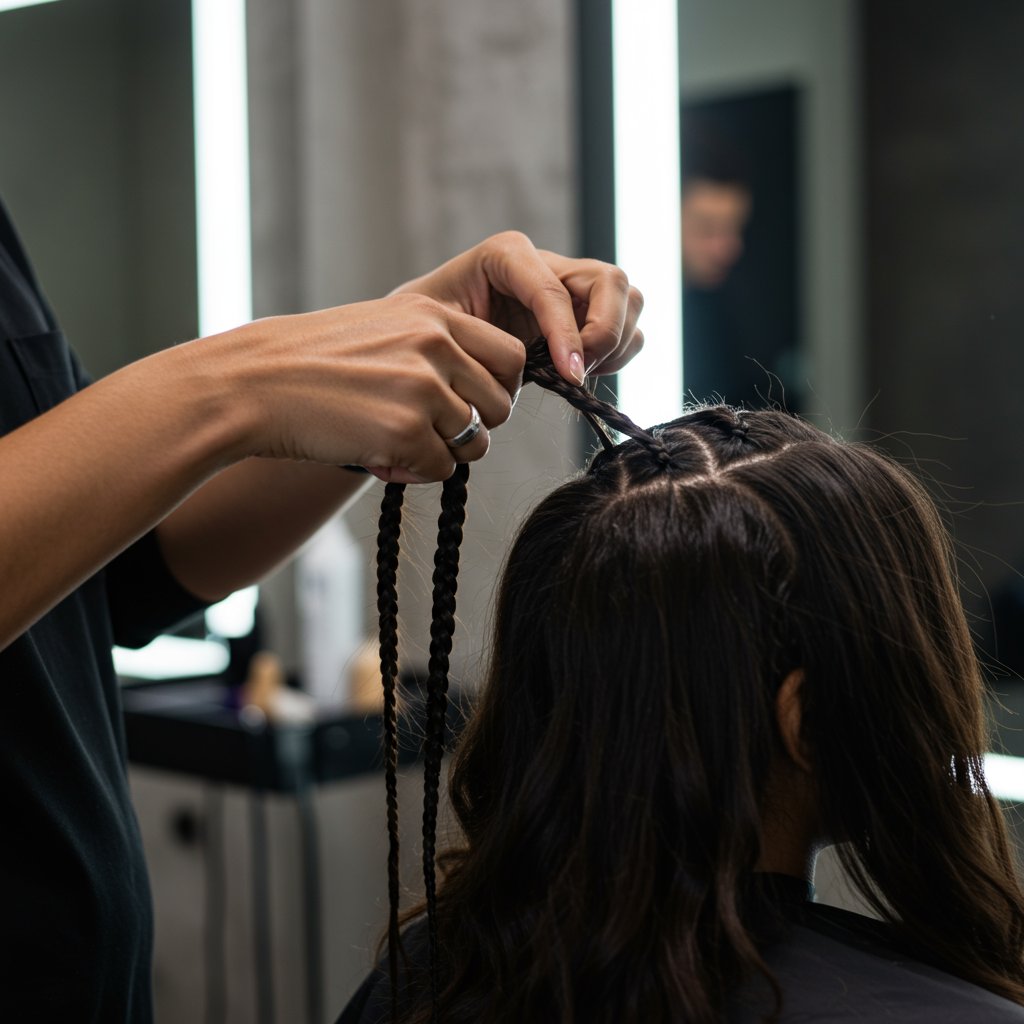
The Box Braid Installation Experience: Precision and Patience
Installing traditional box braids is a meticulous process centered around the anchor knot. The stylist sections the hair into precise boxes, applies product for grip and moisture, and then begins each braid by wrapping the extension hair tightly around the base of the natural hair. This creates the secure knot that defines the style. This process is repeated hundreds of time across the entire head. The initial tightness is often noticeable, and the braids may feel stiff for the first few days, limiting immediate styling versatility. An average installation for medium-sized box braids can take anywhere from 4 to 8 hours, depending on the desired length, thickness, and the stylist's speed.The Knotless Braid Installation Experience: Skill and Seamlessness
The knotless method demands a higher level of technical skill from the braider. The process starts by braiding the client's natural hair for a few stitches before gradually feeding in small pieces of extension hair. This feed-in technique requires the stylist to maintain consistent tension and seamlessly blend the added hair, creating a smooth, flat base. Because of this intricate, gradual process, knotless braid installations can often take longer than traditional box braids—typically ranging from 5 to 9 hours. The extra time and skill required are often reflected in the price, but the payoff is immediate comfort and flexibility.The Health Factor: Scalp Tension and Hair Protection
When choosing a long-term protective style, the health of your hair and scalp should be the top priority. This is where the differences between knotless and traditional box braids become most apparent.
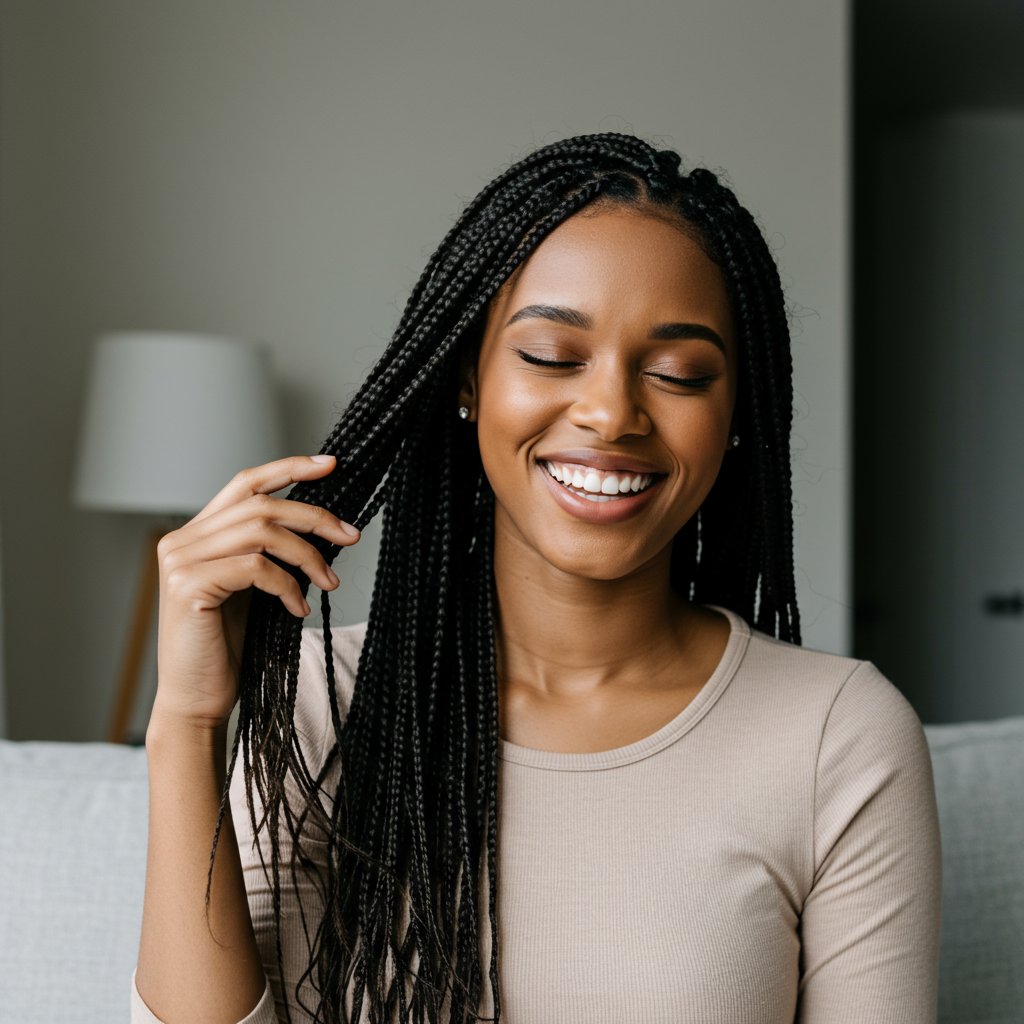
Scalp Health: The Knotless Advantage
The most significant advantage of knotless braids is their kindness to the scalp. The absence of the tight anchor knot means significantly less pulling on the hair follicles. This reduction in tension minimizes the risk of headaches, scalp soreness, and painful bumps (folliculitis) that can sometimes occur in the first few days after getting traditional braids. More importantly, it drastically lowers the risk of traction alopecia, a form of gradual hair loss caused by constant pulling. For those with fine hair, tender scalps, or thinning edges, knotless braids offer a much safer and more comfortable protective styling option. The braids are lightweight and flexible from the moment you leave the salon.Hair Protection: How Both Styles Measure Up
Ultimately, both knotless and box braids are effective protective styles. They tuck away your natural hair, shielding it from environmental stressors, heat styling, and daily manipulation that can lead to breakage. However, the protective quality of box braids is highly dependent on the skill of the installer. If the knots are made too tight or incorporate too much extension hair for the natural section to support, they can cause significant stress and breakage at the root. With knotless braids, the weight is distributed more evenly down the hair shaft rather than being concentrated at the root, which is inherently more gentle on the natural hair strands. Proper preparation, moisturizing, and takedown are essential for maximizing the protective benefits of either style.Aesthetics and Versatility: Styling Your Braids
While hair health is paramount, how your hair looks and how easily you can style it are also major considerations. The installation method directly influences the final look and feel of your braids.
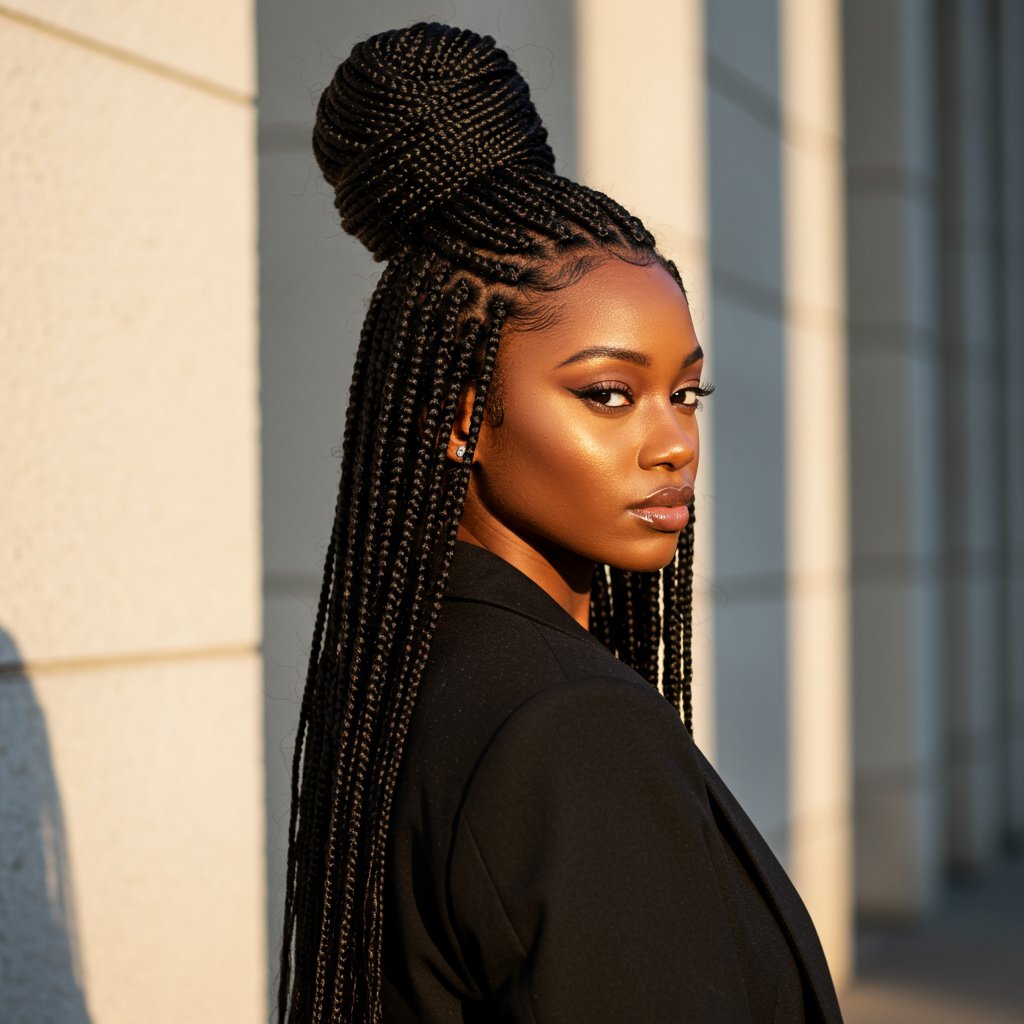
The Look and Feel of Box Braids
Traditional box braids have a distinct and beloved aesthetic. The knots at the base create a very uniform and structured look, with perfectly defined parts that make a statement. This style is bold and has a certain fullness at the root that many people love. However, due to the initial tension from the knots, the braids can be quite stiff for the first few days to a week. This means styling them into high ponytails, buns, or other updos immediately after installation can be uncomfortable and may add even more tension to the scalp. After this initial period, they become more flexible.The Look and Feel of Knotless Braids
Knotless braids offer a more subtle, natural-looking finish. Because they start with your own hair and lie flat against the scalp, they create a seamless transition that looks incredibly organic. This flat-lying nature also means they are incredibly lightweight and flexible from the very beginning. You can walk out of the salon and immediately pull your hair into a high ponytail, a bun, or any style you desire without any pain or tension. This immediate versatility is a huge selling point for those who lead active lifestyles or simply love to switch up their look frequently.Longevity and Maintenance: How Long Do They Last?
A key factor in the Knotless Braids vs. Box Braids decision is how long you can expect the style to last. Both require a similar maintenance routine, but their lifespan can differ slightly due to their foundational structure.
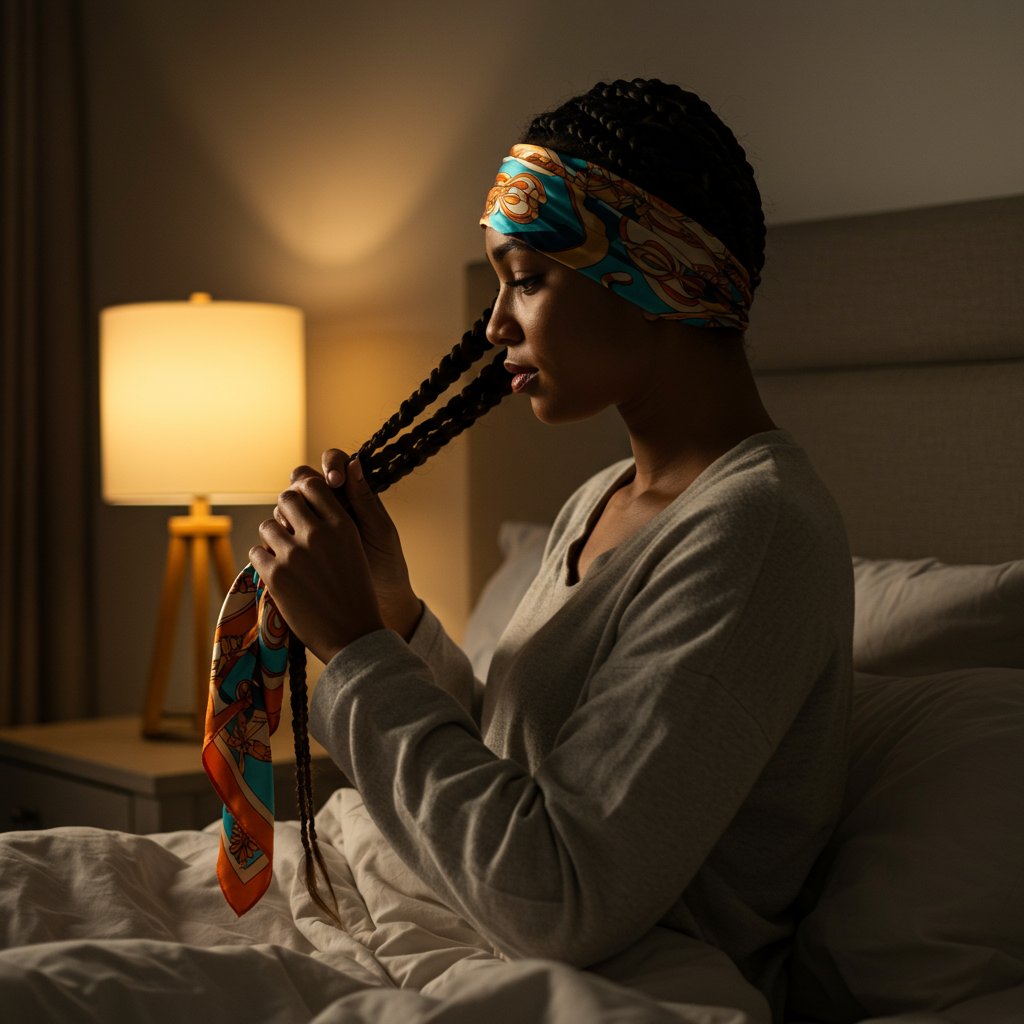
Extending the Life of Box Braids
Thanks to the secure anchor knot, traditional box braids are renowned for their longevity. The knot provides a strong base that is less prone to slipping or becoming fuzzy at the root quickly. With proper care, box braids can typically last between 6 to 8 weeks, and sometimes even longer. This makes them a great option for those seeking a lower-maintenance style that will hold up for an extended period.Maintaining Fresh Knotless Braids
Knotless braids, while beautiful and comfortable, may have a slightly shorter lifespan. Because they begin with your natural hair, new growth can become more apparent sooner, leading to a fuzzier look at the roots more quickly. Typically, knotless braids look their best for 4 to 7 weeks. While they can be worn longer, they may require more frequent touch-ups around the hairline to maintain a fresh appearance. The trade-off for less tension is often a slightly less durable style.General Maintenance Tips for Both
Regardless of the style you choose, proper maintenance is key. This includes cleansing your scalp every 1-2 weeks with a diluted, sulfate-free shampoo or a specialized braid spray. It's also vital to keep your natural hair moisturized by spritzing a water-based leave-in conditioner down the length of your braids. Finally, always protect your investment by sleeping with a silk or satin scarf, bonnet, or pillowcase to reduce friction and prevent frizz.Cost and Investment: What to Expect at the Salon
The financial investment is another practical consideration. Generally, there is a noticeable price difference between the two styles, which is directly tied to the skill and time required for installation.
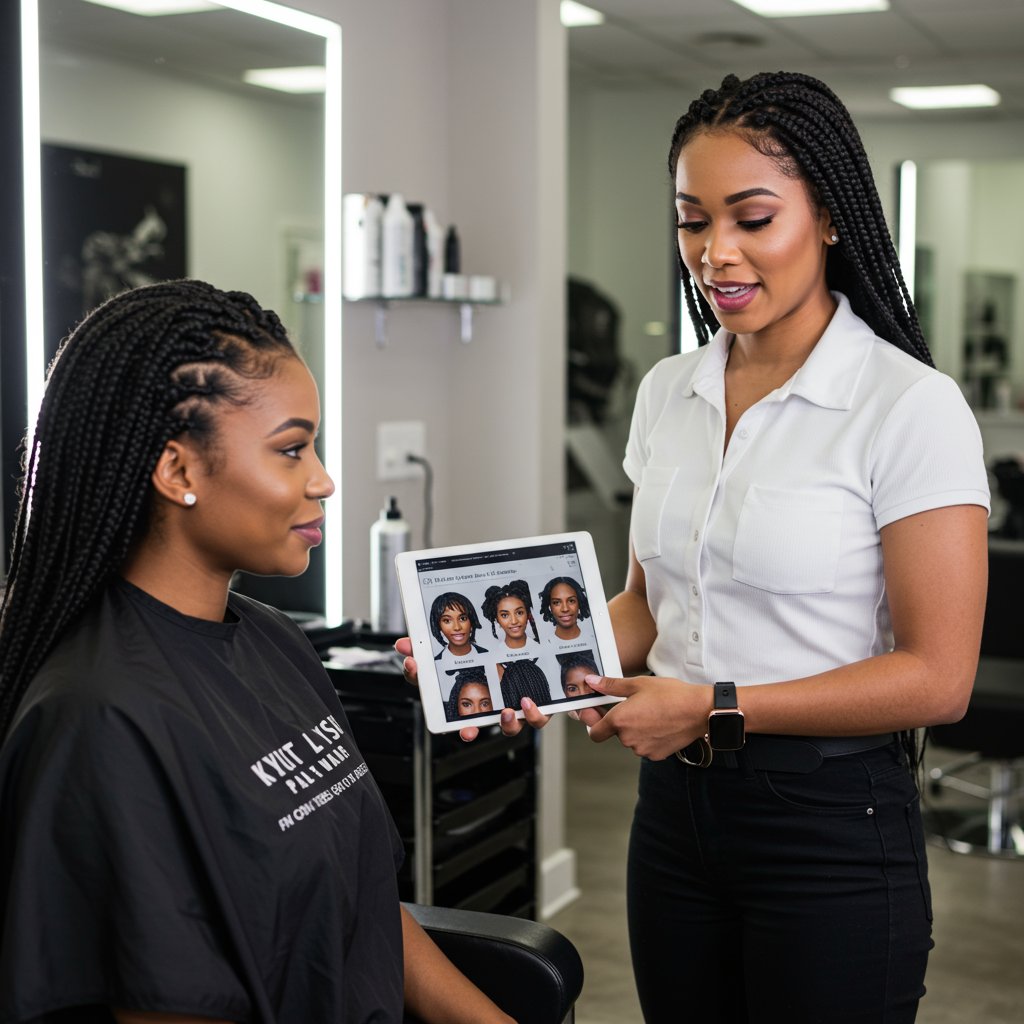
Knotless braids are almost always more expensive than traditional box braids. The price difference can range from $50 to over $150, depending on the salon, location, and stylist's expertise. This higher cost is justified by a few factors. First, the feed-in technique is more complex and requires a higher level of skill and precision. Second, knotless installations often take more time to complete. You are essentially paying for the advanced technique and the significant benefits of a tension-free, healthier protective style.
While the upfront cost of box braids is lower, it's important to consider the overall value. If you have a sensitive scalp or are concerned about potential hair damage, the higher price for knotless braids can be seen as an investment in the long-term health of your hair. When making your decision, weigh your budget against your hair health priorities. Always consult with a professional stylist to get an accurate quote and discuss which option aligns best with your needs.
Pro Tips for Choosing and Caring for Your Braids
To ensure you have the best possible experience, here are some expert tips for getting and maintaining your braids:
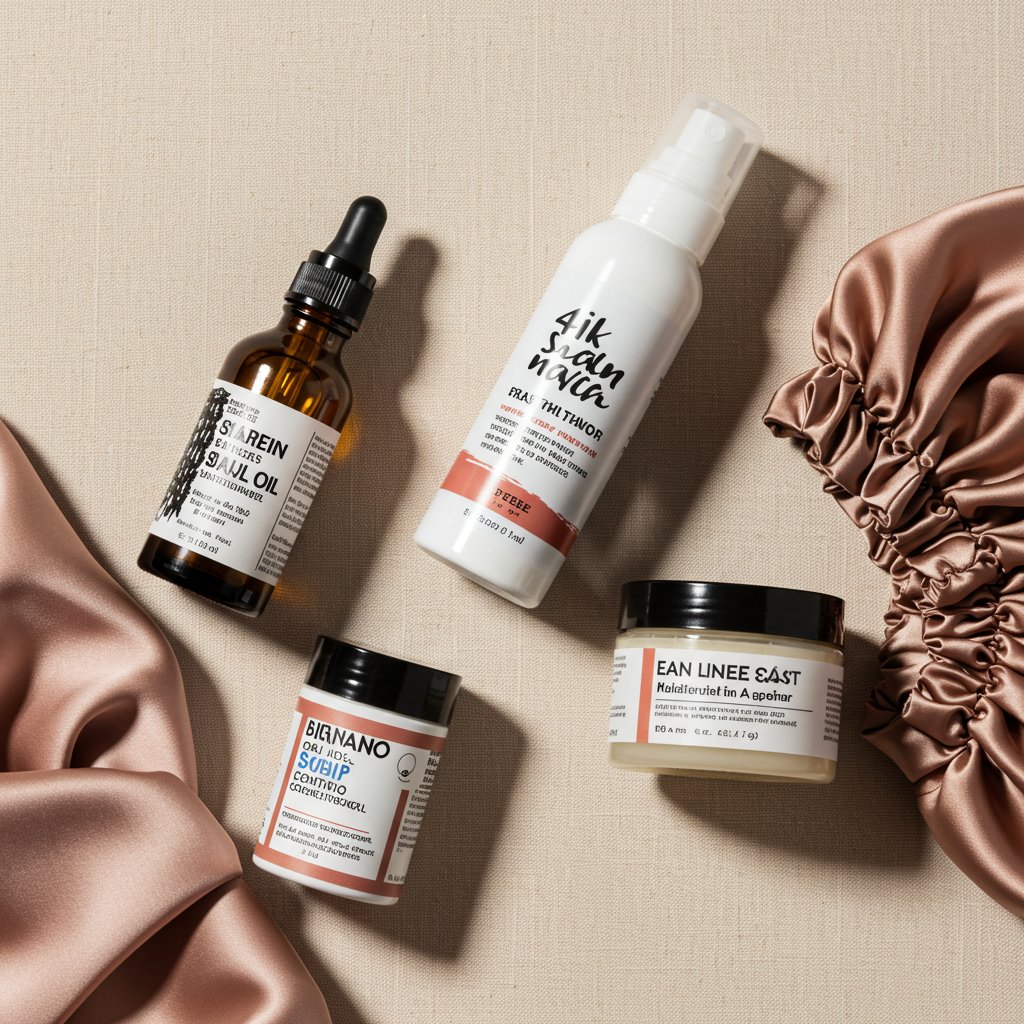
- Find an Experienced Braider: The quality of your protective style is 90% dependent on the stylist. Look for a professional who specializes in the style you want, checks for client reviews, and has a portfolio of clean, neat work. A good braider will prioritize the health of your hair, not just the look of the style.
- Prep Your Hair Properly: Arrive at your appointment with your hair thoroughly washed, detangled, and stretched (e.g., via blow-drying on low heat or through a non-heat method like banding). This creates a smooth canvas for the stylist and reduces breakage during the parting and braiding process.
- Communicate During Installation: If you feel any excessive pulling or pain during your appointment, speak up immediately. A professional stylist will adjust their technique. A protective style should never be painful.
- Establish a Nighttime Routine: Never go to bed without protecting your braids. Use a large satin bonnet or wrap your braids in a silk scarf. This minimizes frizz, protects your edges, and keeps the style looking fresher for longer.
- Know When to Let Go: Do not leave your braids in for longer than the recommended time (typically 8 weeks maximum). Keeping them in for too long can lead to matting, product buildup, and dryness, which can cause severe breakage during the takedown process.
Frequently Asked Questions (FAQ) about Knotless vs. Box Braids
1. Which style is better for thin or fine hair?
Knotless braids are overwhelmingly recommended for those with thin or fine hair. The lack of a knot at the base puts far less stress on the hair follicles, reducing the risk of breakage and traction alopecia, which fine hair is more susceptible to.2. Can I get my braids wet at the beach or pool?
Yes, you can get both styles wet. However, be aware that wet braids can become extremely heavy, putting temporary strain on your roots. After swimming, gently squeeze out excess water and ensure your scalp and the braids dry completely to prevent mildew and odor. Knotless braids may dry slightly faster due to the less dense base.3. Do box braids hurt more than knotless braids?
Initially, yes. Traditional box braids are known for causing some degree of scalp tenderness and tightness for the first few days due to the tension from the anchor knot. Knotless braids are virtually painless from the moment of installation.4. How do I know if my braids are too tight?
Signs of braids being too tight include persistent headaches, visible redness or small white bumps around the base of the braids, and a feeling of being unable to move your head or face freely. If you experience these symptoms, the braids are too tight and could cause damage.5. Which style is quicker to install?
This can vary, but generally, traditional box braids can be slightly quicker to install because the knotting technique, once mastered, is very repetitive and fast. The feed-in method for knotless braids requires more finesse and can take longer.6. Can I install these styles myself?
While it is possible to braid your own hair, for styles as intricate and time-consuming as box braids or knotless braids, it is highly recommended to see a professional. A professional ensures proper parting, consistent tension, and protects the overall health of your hair, especially the parts you can't see.Conclusion: Making the Final Decision for Your Hair
The choice in the Knotless Braids vs. Box Braids debate ultimately comes down to your personal priorities. There is no single "better" option—only what is better for you.
If your primary concerns are scalp health, immediate comfort, and styling flexibility, and you have a budget that allows for a higher investment, knotless braids are an outstanding choice. They are particularly beneficial for those with sensitive scalps, fine hair, or anyone looking to minimize tension on their follicles.
If you are seeking a style with maximum longevity, a classic and bold aesthetic, and a more budget-friendly price point, traditional box braids remain a fantastic and reliable option. When done by a skilled stylist who knows how to manage tension correctly, they can be a beautiful and effective protective style.
Whichever path you choose, remember that the goal of a protective style is to protect. Listen to your hair, prioritize its health, and work with a trusted stylist to bring your vision to life. Both styles offer a beautiful way to express yourself while giving your natural hair the rest and protection it deserves.

